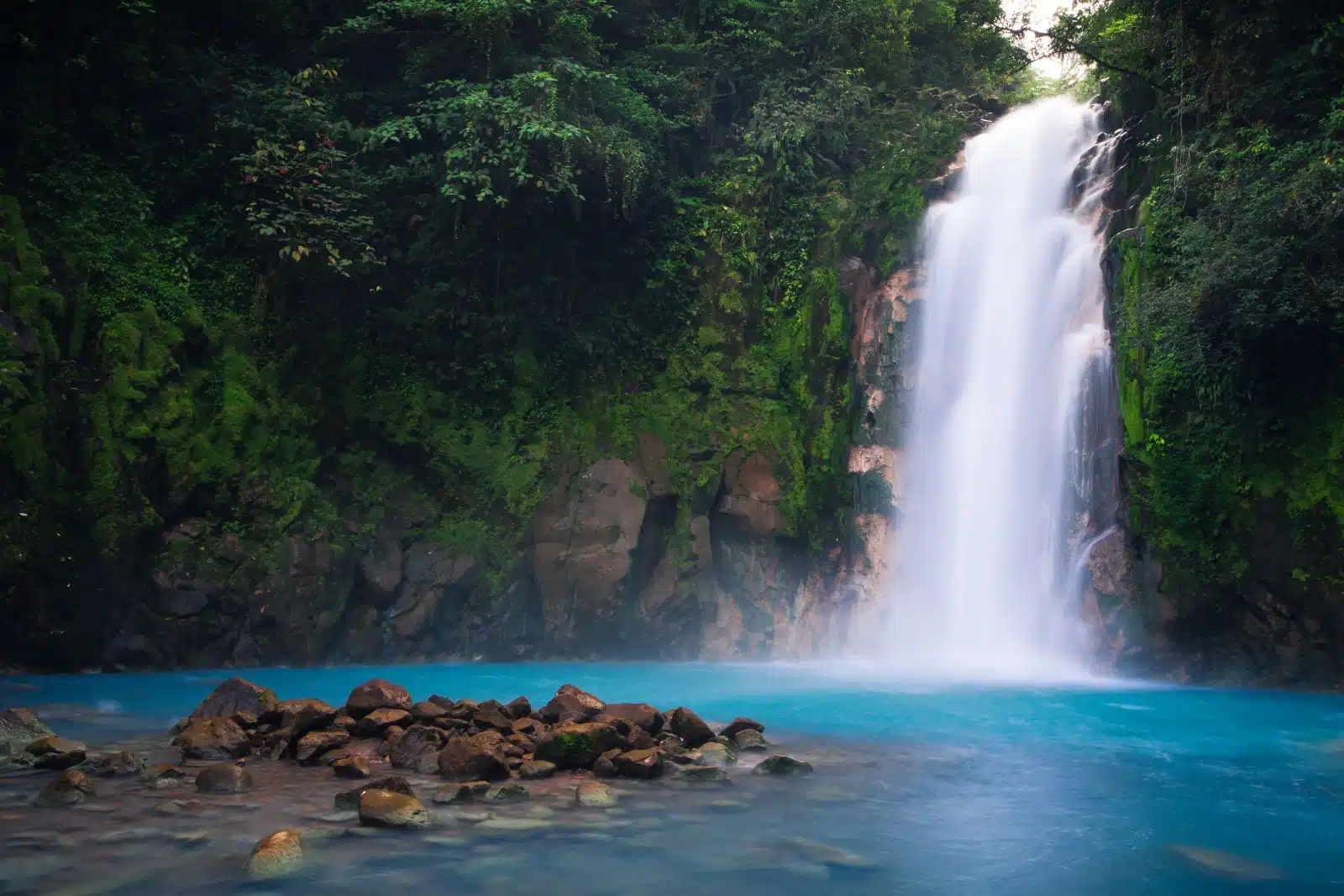As the world becomes increasingly aware of the critical importance of rainforests in sustaining our planet’s health, efforts to regenerate these vital ecosystems have gained momentum. “The Rebirth of Rainforests” explores these regeneration projects, spotlighting the areas where concerted efforts to revive and protect rainforest ecosystems are underway.
This comprehensive guide aims to enlighten travelers on how they can contribute to and support the regeneration of rainforests while exploring some of the planet’s most biodiverse regions. From the lush canopy of the Amazon to the dense foliage of Southeast Asia and the vibrant undergrowth of Central Africa, we explore the world of rainforest regeneration, celebrating the protectors of these green sanctuaries and offering insights on responsible travel practices that aid conservation efforts.
1. Amazon Rainforest, Brazil
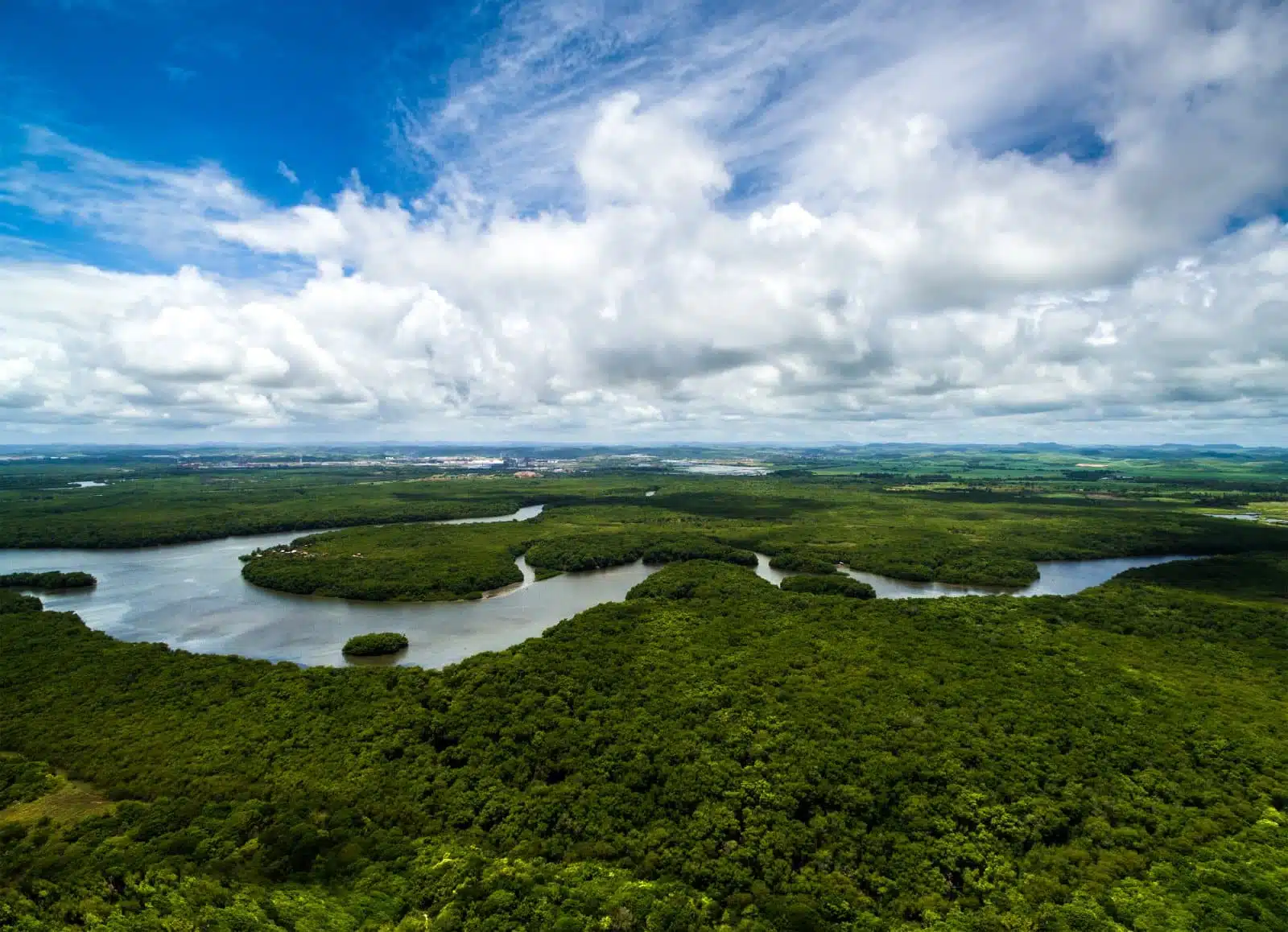
Image Credit: Shutterstock / Gustavo Frazao
The Amazon Rainforest, often referred to as the lungs of the Earth, is at the forefront of global rainforest regeneration initiatives. In Brazil, numerous projects focus on reforestation, sustainable community development, and biodiversity conservation. Travelers can participate in eco-tours that combine education on the Amazon’s ecological significance with hands-on activities like tree planting and wildlife monitoring. These tours are often run in collaboration with indigenous communities, providing an immersive experience into the traditional knowledge and conservation techniques that have protected the rainforest for generations.
Insider’s Tip: Engage with local initiatives that offer direct involvement in reforestation projects. Opting for tours that allocate a portion of their proceeds to conservation efforts ensures your visit contributes positively to the Amazon’s regeneration.
When to Travel: From June to September, the dry season offers easier access to remote areas and more wildlife sighting opportunities.
How to Get There: Fly into Manaus, the gateway to the Brazilian Amazon. From there, numerous tour operators offer excursions into various parts of the rainforest, focusing on conservation and regeneration efforts.
2. Monteverde Cloud Forest, Costa Rica
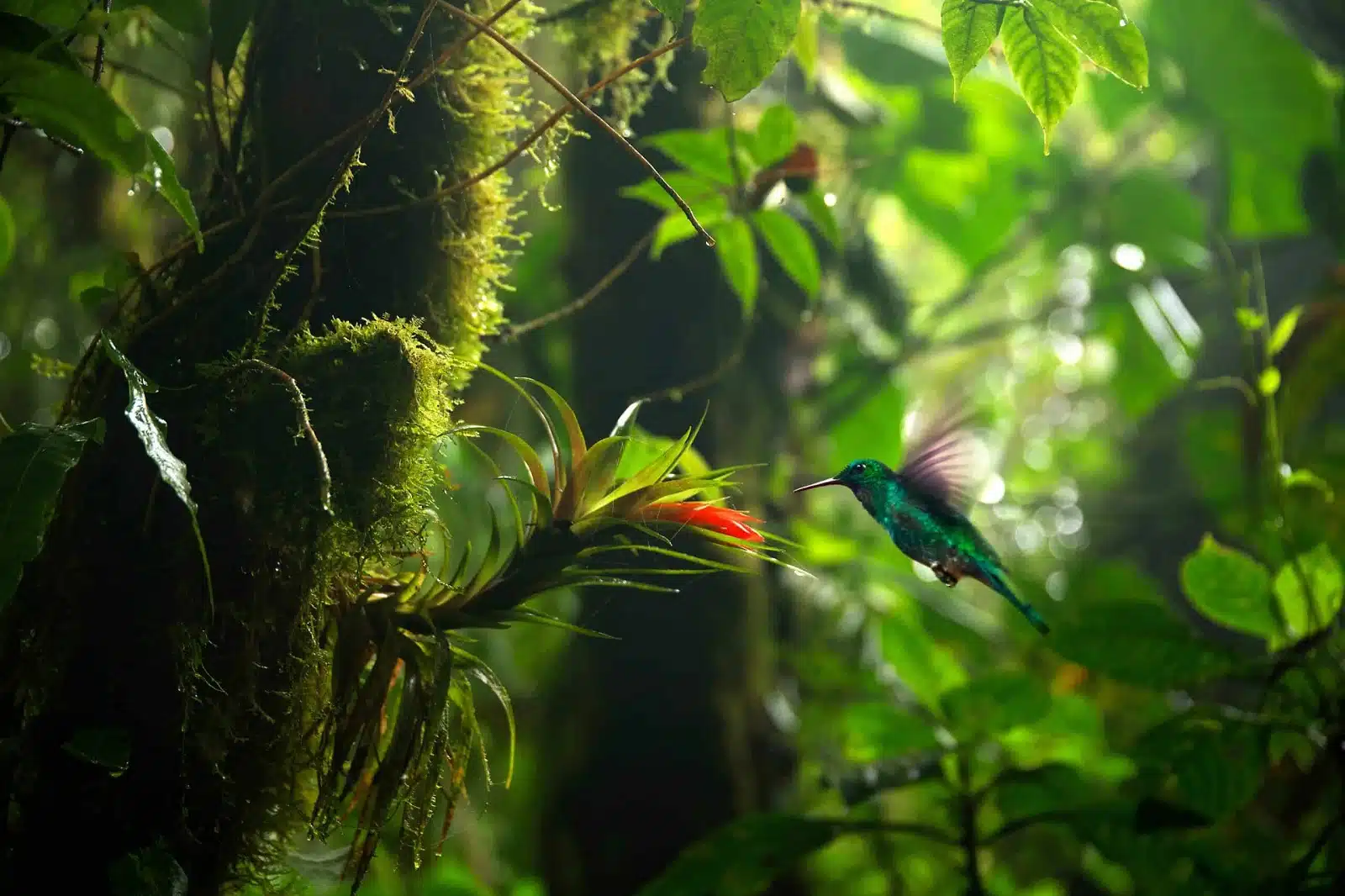
Image credit: Shutterstock / Teo Tarras
Costa Rica’s Monteverde Cloud Forest highlights successful rainforest regeneration and conservation. This lush ecosystem, home to thousands of plant species, birds, and mammals, showcases the results of community-led conservation initiatives. Visitors can explore the forest via suspension bridges, zip lines, or guided walks, learning about the importance of cloud forests and efforts to expand their coverage. The region’s focus on eco-tourism has made it a model for sustainable travel and conservation.
Insider’s Tip: Participate in a guided night walk for a chance to see the cloud forest’s nocturnal inhabitants and understand the ecosystem’s 24-hour life cycle.
When to Travel: May to October, the wetter months, showcase the cloud forest in its most lush and vibrant state.
How to Get There: Monteverde is accessible by bus or car from Costa Rica’s capital, San José, with the journey offering scenic views of the Costa Rican countryside.
3. Kinabatangan River, Borneo, Malaysia
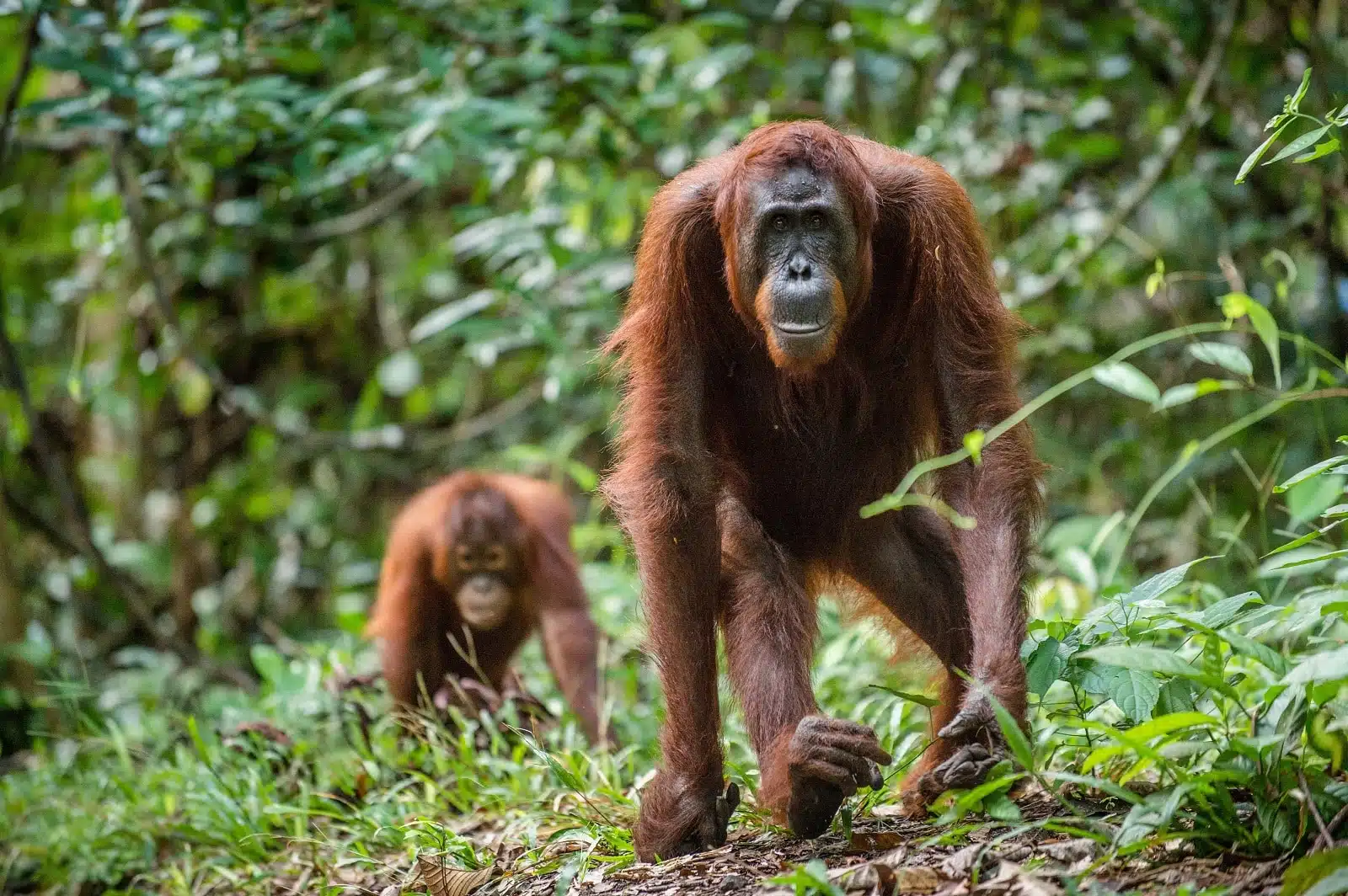
Image Credit: Shutterstock / Sergey Uryadnikov
The Kinabatangan River in Borneo, Malaysia, flows through one of the most wildlife-rich rainforests in Southeast Asia, which has seen significant conservation efforts to regenerate areas affected by deforestation. Wildlife safaris along the river offer sightings of orangutans, pygmy elephants, and a plethora of bird species. Conservation organizations often seek volunteers for reforestation projects, providing a hands-on way for travelers to contribute to the rainforest’s regeneration.
Insider’s Tip: Choose lodges and tour operators that support local conservation efforts and provide benefits to indigenous communities.
When to Travel: March to October offers the best wildlife viewing opportunities, with lower water levels making more areas accessible.
How to Get There: Access the Kinabatangan River from Sandakan or Kota Kinabalu, with local tour operators providing transfers to lodges and conservation sites along the river.
4. The Atlantic Rainforest, Brazil
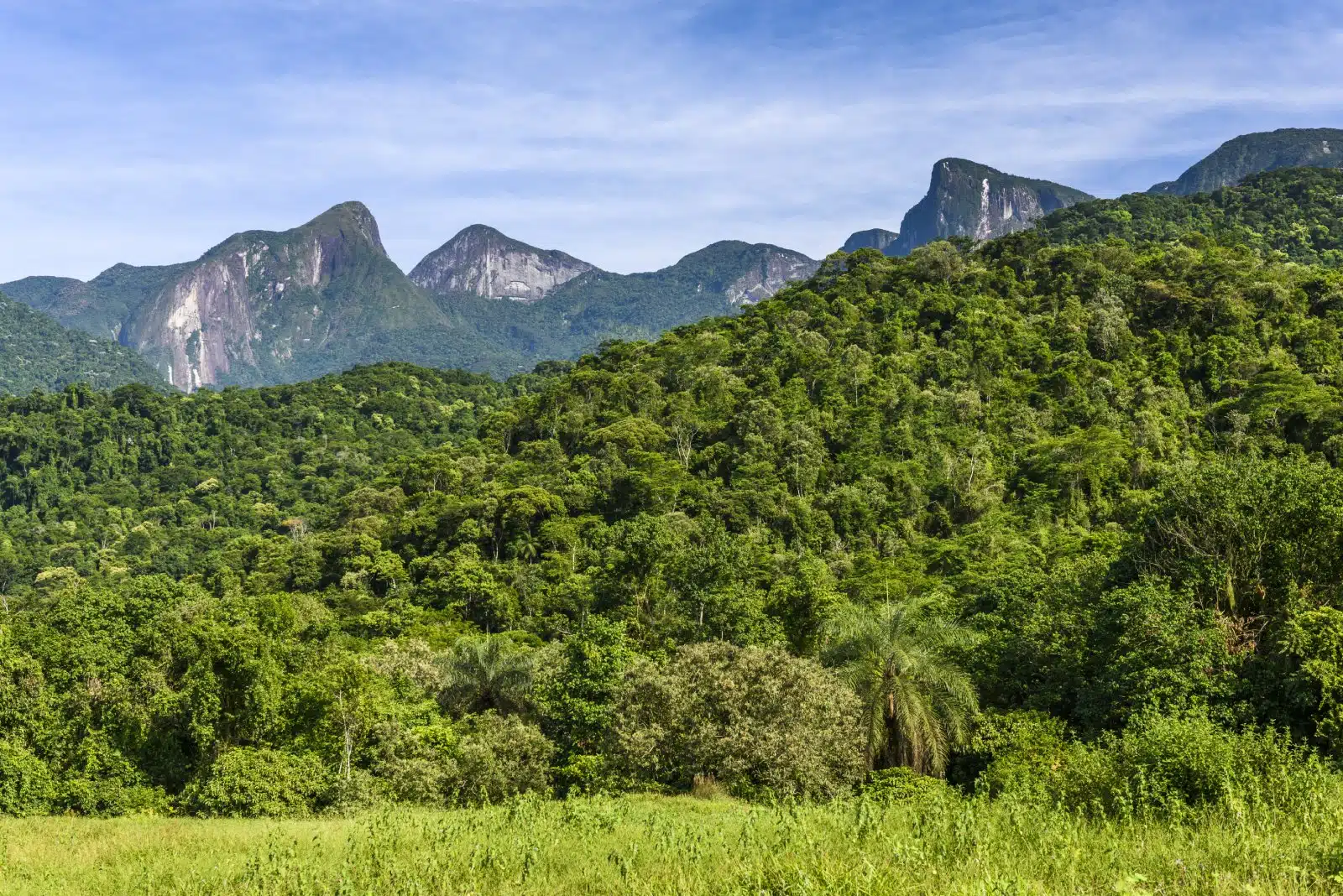
Image Credit: Shutterstock / vitormarigo
Less renowned than its counterpart, the Amazon, the Atlantic Rainforest, or Mata Atlântica, stretches along Brazil’s coast and is one of the world’s most diverse and endangered biomes. Efforts to regenerate this vital ecosystem involve reforestation projects and sustainable agriculture practices that restore lost forest cover and support local communities’ livelihoods. Eco-tourism initiatives offer travelers immersive experiences, from hiking regenerated trails to participating in conservation workshops led by local NGOs.
Insider’s Tip: Engage in bird-watching tours that focus on conservation education. The Atlantic Rainforest is home to an incredible variety of bird species, many of which are endemic and conservation-dependent.
When to Travel: The cooler, drier months from April to October offer the most comfortable conditions for exploring the lush landscapes of the Atlantic Rainforest.
How to Get There: Fly into Rio de Janeiro or São Paulo, from where numerous eco-tour operators organize trips into different parts of the Atlantic Rainforest, including national parks and protected areas.
5. Daintree Rainforest, Australia
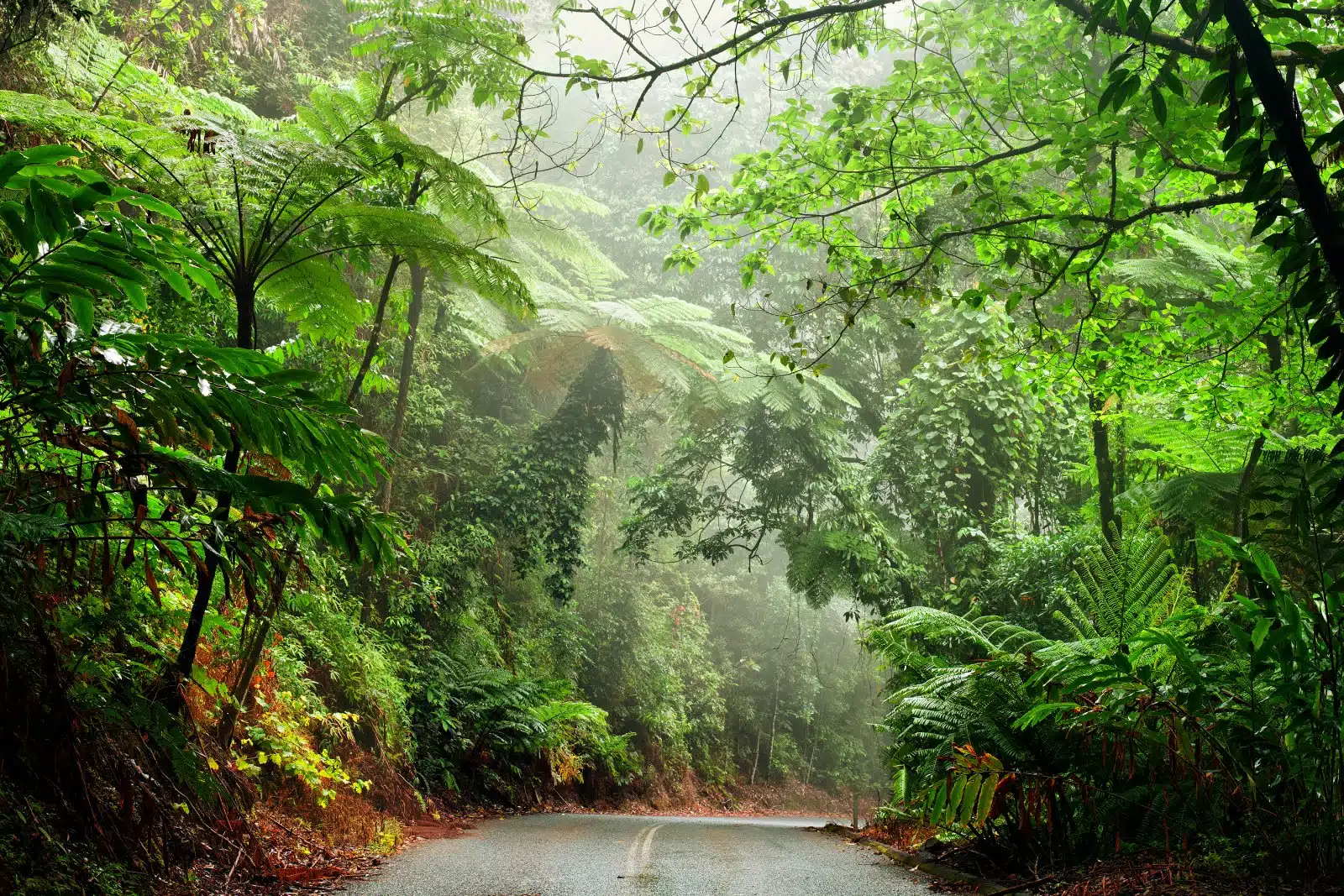
Image Credit: Shutterstock / AustralianCamera
The Daintree Rainforest in North Queensland is one of Earth’s oldest continuous tropical rainforests. Conservation efforts focus on balancing visitor access with preserving the forest’s pristine condition. Projects include tree planting initiatives, removal of invasive species, and research on rainforest ecology. Visitors can explore the forest through guided walks, canopy tours, and river cruises, gaining insights into the unique biodiversity and the importance of regeneration efforts.
Insider’s Tip: Stay in eco-accommodations that practice rainwater harvesting, solar energy use, and other sustainable operations to minimize your ecological footprint during your visit.
When to Travel: The dry season from June to August is ideal for visiting, with less rainfall and lower humidity, making outdoor activities more enjoyable.
How to Get There: Cairns is the gateway to the Daintree Rainforest, with the area accessible by car or shuttle services offering tours that include conservation-focused activities.
6. Sumatra Rainforest, Indonesia
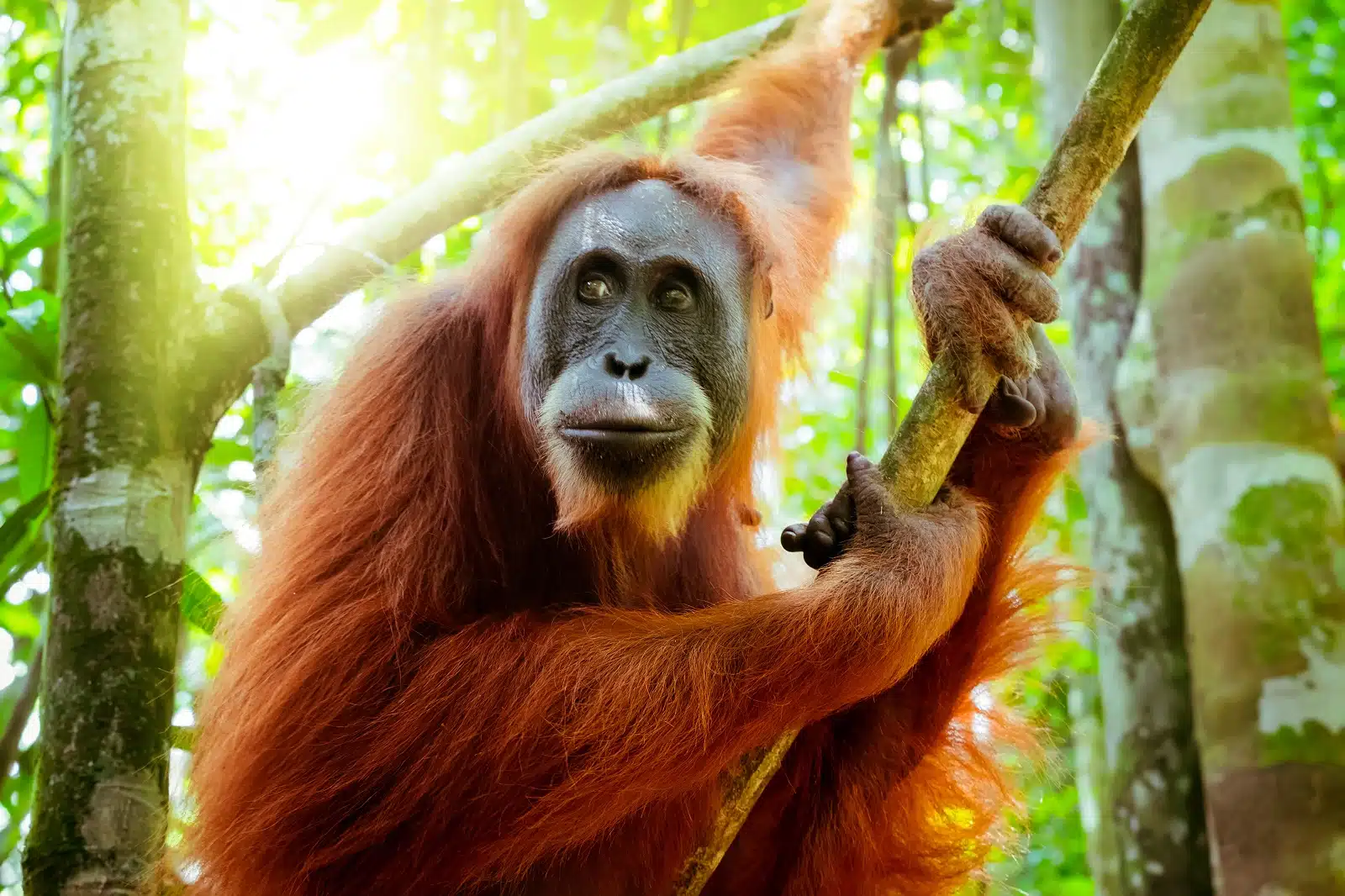
Image Credit: Shutterstock / Perfect Lazybones
The Sumatra Rainforest, recognized for its critical biodiversity, faces threats from deforestation and palm oil plantations. Conservation projects in the area aim to regenerate and protect habitats for endangered species like the Sumatran orangutan, tiger, and rhino. Eco-tours in Sumatra allow travelers to witness the majestic beauty of the rainforest and its wildlife while contributing to conservation efforts through responsible tourism practices.
Insider’s Tip: Participate in eco-volunteer programs that involve habitat restoration and wildlife monitoring, offering a deeper understanding of conservation challenges and efforts in Sumatra.
When to Travel: The best time to visit is during the dry season from May to September, which offers easier access to trails and wildlife viewing opportunities.
How to Get There: International visitors can fly into Medan, Sumatra’s largest city. From Medan, local travel operators offer guided tours to conservation sites and national parks within the rainforest.
7. Cloud Forests of Monteverde, Costa Rica
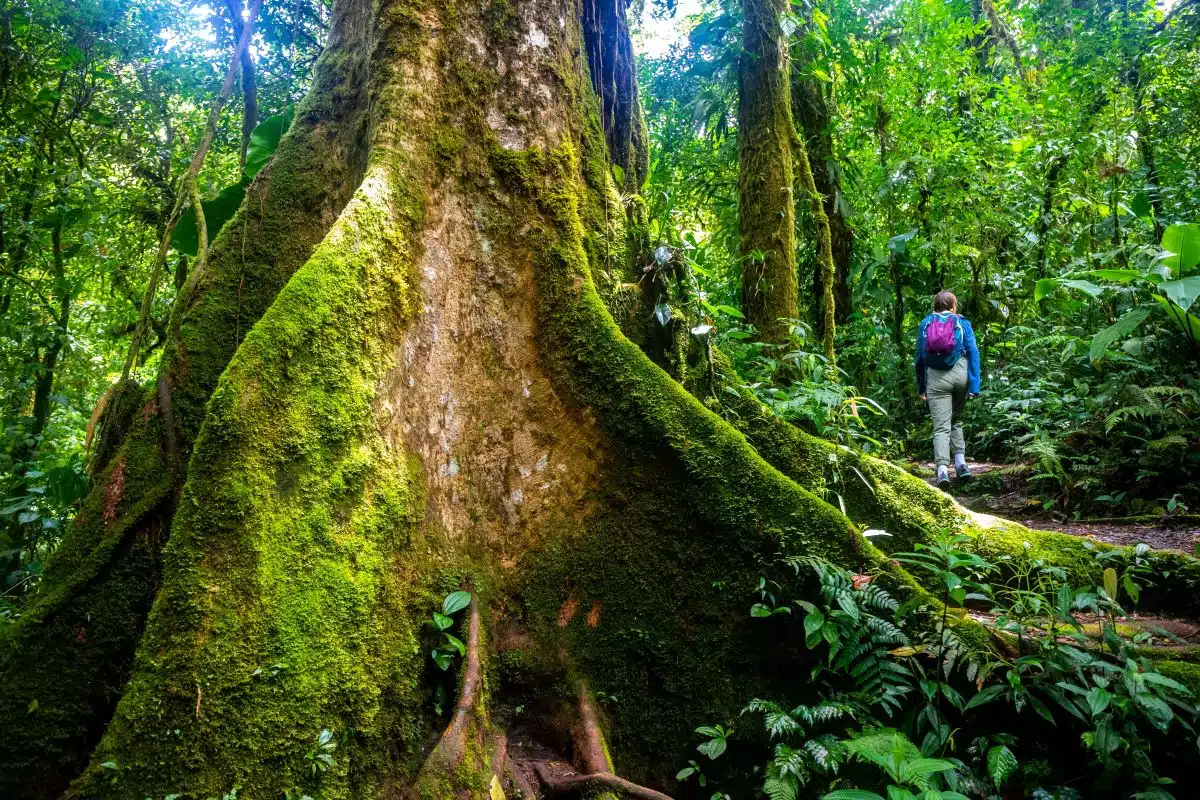
Image credit: Shutterstock / Jakub Maculewicz
Monteverde’s Cloud Forests in Costa Rica are a testament to the country’s dedication to conservation and eco-tourism. These forests are a biodiversity hotspot with over 2,500 plant species, 100 mammal species, and 400 bird species. Efforts in Monteverde focus not only on regeneration and protection but also on education, with numerous facilities dedicated to teaching visitors about the importance of cloud forests. Travelers can explore the forest through guided tours, canopy walks, and zip-lining adventures, all designed to minimize environmental impact while maximizing visitor engagement with the forest’s natural wonders.
Insider’s Tip: For a unique perspective, visit the Monteverde Cloud Forest Reserve when the forest awakens at dawn. Early morning tours offer the chance to see and hear a wide variety of birds and wildlife.
When to Travel: The dry season from December to April is the best time to visit, offering clearer skies and less muddy hiking conditions.
How to Get There: Monteverde is accessible from Costa Rica’s capital, San José, by bus, car, or a short domestic flight to nearby airports, followed by a transfer to the cloud forest area.
8. New Guinea’s Tropical Rainforest, Papua New Guinea & Indonesia
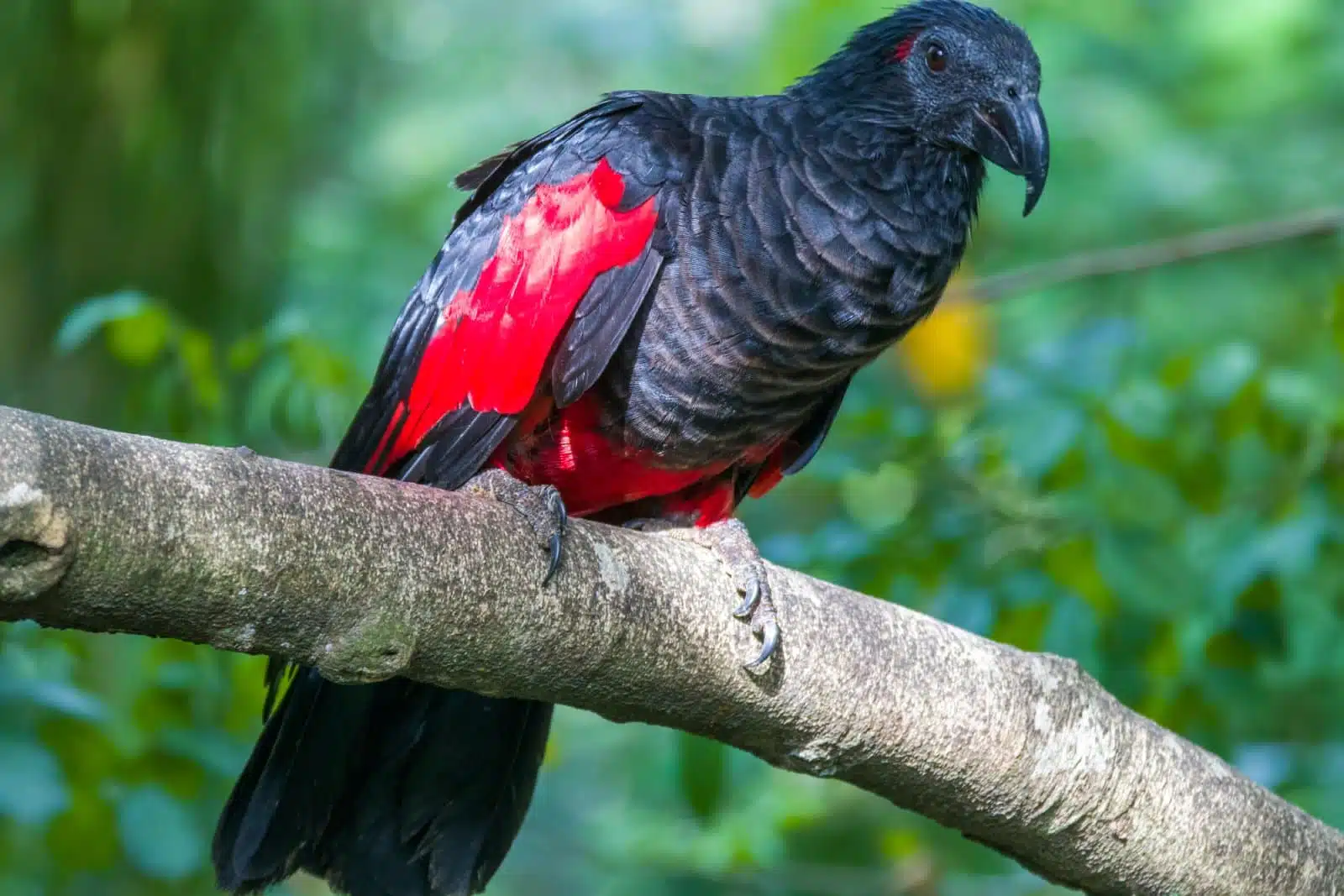
Image Credit: Shutterstock / Danny Ye
The tropical rainforests of New Guinea, shared by Papua New Guinea and Indonesia, are among the least explored but most biodiverse on the planet. Conservation efforts in these regions are crucial in protecting unique species and supporting the livelihoods of indigenous communities. Eco-tours in New Guinea offer an immersive experience of the culture and natural beauty of the rainforest, emphasizing low-impact travel and direct benefits to local conservation initiatives.
Insider’s Tip: Engage with local guides for a trek into the heart of the rainforest. Their knowledge enhances the experience and ensures your visit supports local economies.
When to Travel: The best time to visit is during the dry season from May to October, which provides more accessible trekking conditions and wildlife viewing opportunities.
How to Get There: International flights to Port Moresby in Papua New Guinea or to Jayapura in Indonesia are the gateways to exploring New Guinea’s rainforests, with local transport options available to reach conservation areas.
9. Atlantic Forest Southeast Reserves, Brazil
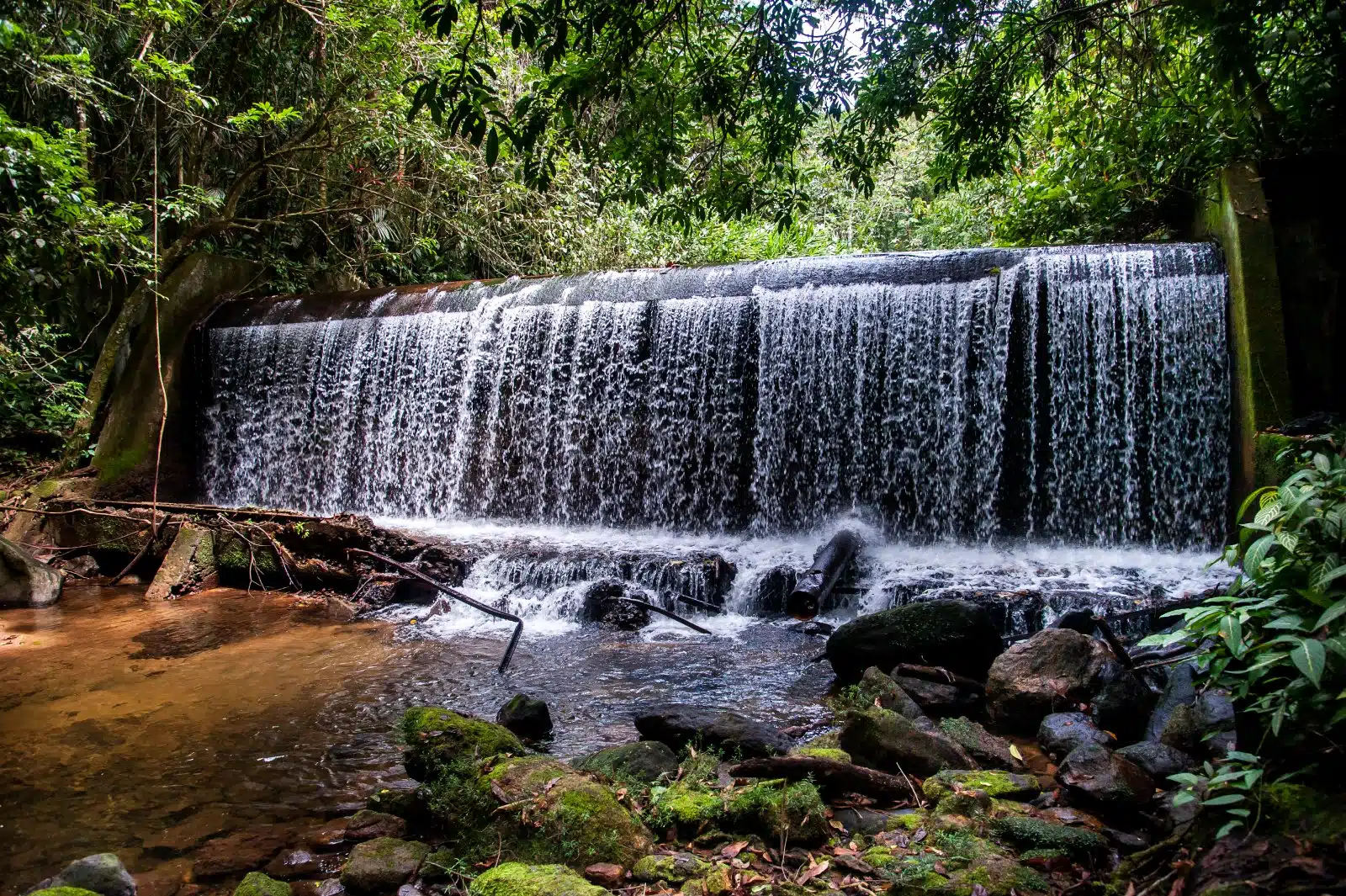
Image Credit: Shutterstock / Leonardo Mercon
Brazil’s Atlantic Forest Southeast Reserves encompass a series of protected areas that are part of the larger Atlantic Forest biome. These reserves are critical in regenerating and protecting what’s left of the forest, which once covered a vast area along Brazil’s coast. The reserves are a haven for numerous endemic and endangered species. Eco-tours and volunteer programs within these reserves allow visitors to contribute to reforestation efforts and learn about the unique biodiversity of the Atlantic Forest.
Insider’s Tip: Participate in a tree-planting activity. Many conservation projects within the reserves welcome visitor participation as a way to directly contribute to the forest’s regeneration.
When to Travel: The mild climate year-round makes any time a good time to visit, but the cooler months from April to September offer the most comfortable conditions for hiking and outdoor activities.
How to Get There: The reserves are best accessed from São Paulo or Rio de Janeiro, with local travel agencies offering eco-tours that focus on conservation and sustainable tourism practices.
10. Annapurna Conservation Area, Nepal

Image Credit: Shutterstock / Anton Jankovoy
The Annapurna Conservation Area in Nepal is an important example of mountain ecosystem regeneration and sustainable tourism practices. Home to diverse flora and fauna, the area has seen successful conservation efforts that balance environmental protection with community development. Trekking routes in the Annapurna region offer breathtaking views while supporting local lodges and guides that adhere to eco-friendly practices.
Insider’s Tip: Choose eco-lodges and hire local guides to ensure your visit directly benefits the conservation efforts and local economy.
When to Travel: Pre-monsoon (March to May) and post-monsoon (September to November) seasons offer the best trekking conditions and clear views of the Himalayas.
How to Get There: Fly into Kathmandu, followed by a domestic flight or bus journey to Pokhara, where treks into the Annapurna Conservation Area begin.
The Bottom Line
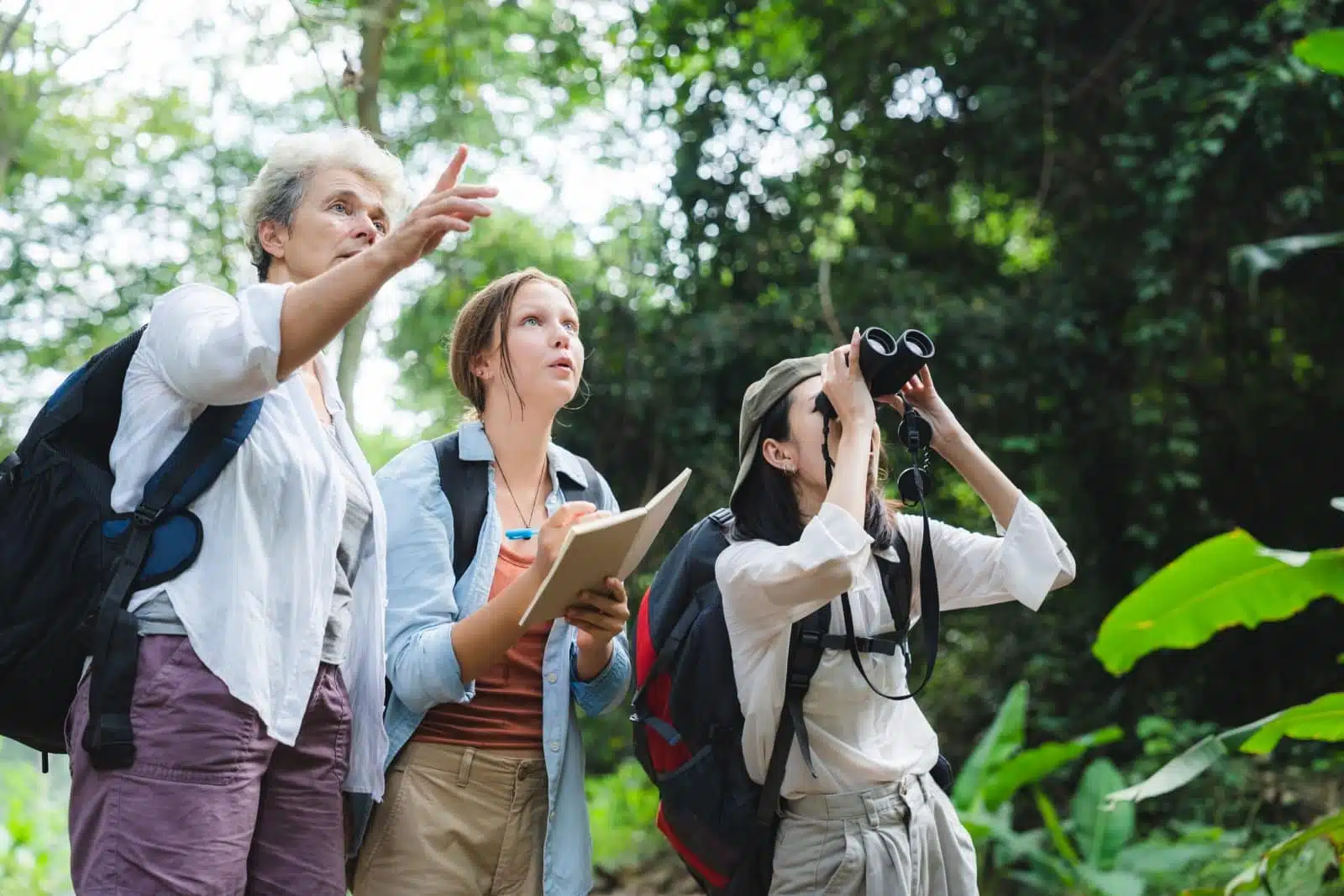
Image Credit: Shutterstock / Chokniti-Studio
Exploring the world’s regenerated rainforests and conservation areas offers a unique opportunity to witness the resilience of nature and the impact of human efforts to restore these crucial ecosystems. Travelers can ensure their journeys contribute positively to the ongoing story of ecological restoration by choosing destinations that prioritize conservation and community involvement. Each visit to these areas is a step towards a deeper understanding of our planet’s diversity and the importance of preserving it for future generations. As we venture into these lush landscapes, let’s commit to being responsible travelers, supporting the regeneration of our planet’s green lungs, and celebrating the protectors of these verdant havens.
More From The Green Voyage
Top 10 Trending Travel Destinations 2024
6 Essential Banking Apps for International Travel – Managing Your Finances on the Go
Traveling With Kids – 10 Tips to Create Memorable Family Holidays
The post The Rebirth of Rainforests 2024 – Visiting 10 Areas of Regeneration first appeared on The Green Voyage.
Featured Image Credit: Shutterstock / Martijn Smeets.
For transparency, this content was partly developed with AI assistance and carefully curated by an experienced editor to be informative and ensure accuracy.
Tips for Trip Success
Book Your Flight
Find an inexpensive flight by using Kayak, a favorite of ours because it regularly returns less expensive flight options from a variety of airlines.
Book Your Hotel or Special Accommodation
We are big fans of Booking.com. We like their review system and photos. If we want to see more reviews and additional booking options, we go to Expedia.
You Need Travel Insurance!
Good travel insurance means having total peace of mind. Travel insurance protects you when your medical insurance often will not and better than what you get from your credit card. It will provide comprehensive coverage should you need medical treatment or return to the United States, compensation for trip interruption, baggage loss, and other situations.Find the Perfect Insurance Plan for Your Trip
